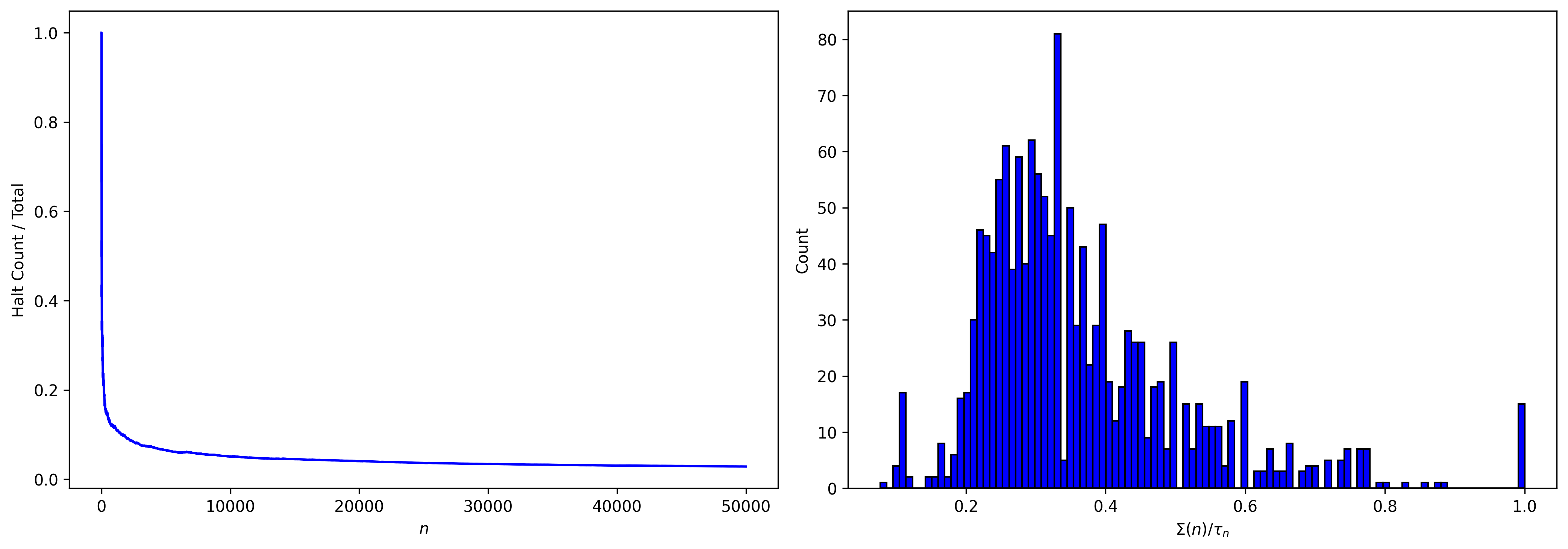Collatz's Tape
Let’s develop a bit on the already alluded 1D case of Collatz’s Ant - Collatz’s Tape.
Consider an empty tape with all unmarked cells, such that the reading head (standing initially in the middle of the tape) applies the collatz function to a starting $n$:
\[f(n) = \begin{cases} n/2 & \text{if} \quad n \equiv 0 \quad (\text{mod}\, 2) \\ 3n + 1 & \text{if} \quad n \equiv 1 \quad (\text{mod}\, 2) \\ \end{cases}\]flipping the state of the cell it currently stands in, and then moving left if $n$ is odd, and right if $n$ is even. It will do this until $n = 1$ is reached. Consider the example of $n = 27$:

Let us get three values from corresponding tapes:
-
$\tau$ is the stopping time for a given $n$ which in this case is completely dictated by the collatz function.
-
$\Sigma$ is a score fuction which returns the amount of 1’s (or marked states) left in the tape after $\tau$ iterations. Any explicit deviations from this definition will be mentioned later (e.g. $\Sigma^{max}$).
and
- $α$ is the maximum distance reached relative to the starting position.
For the prior example of $n = 27$, we have $τ = 111$, $Σ = 13$ and $α = 29$.
Just to have an idea of how these vary over $n$, let’s consider the cases from $n = 2$ to $n = 50000$:
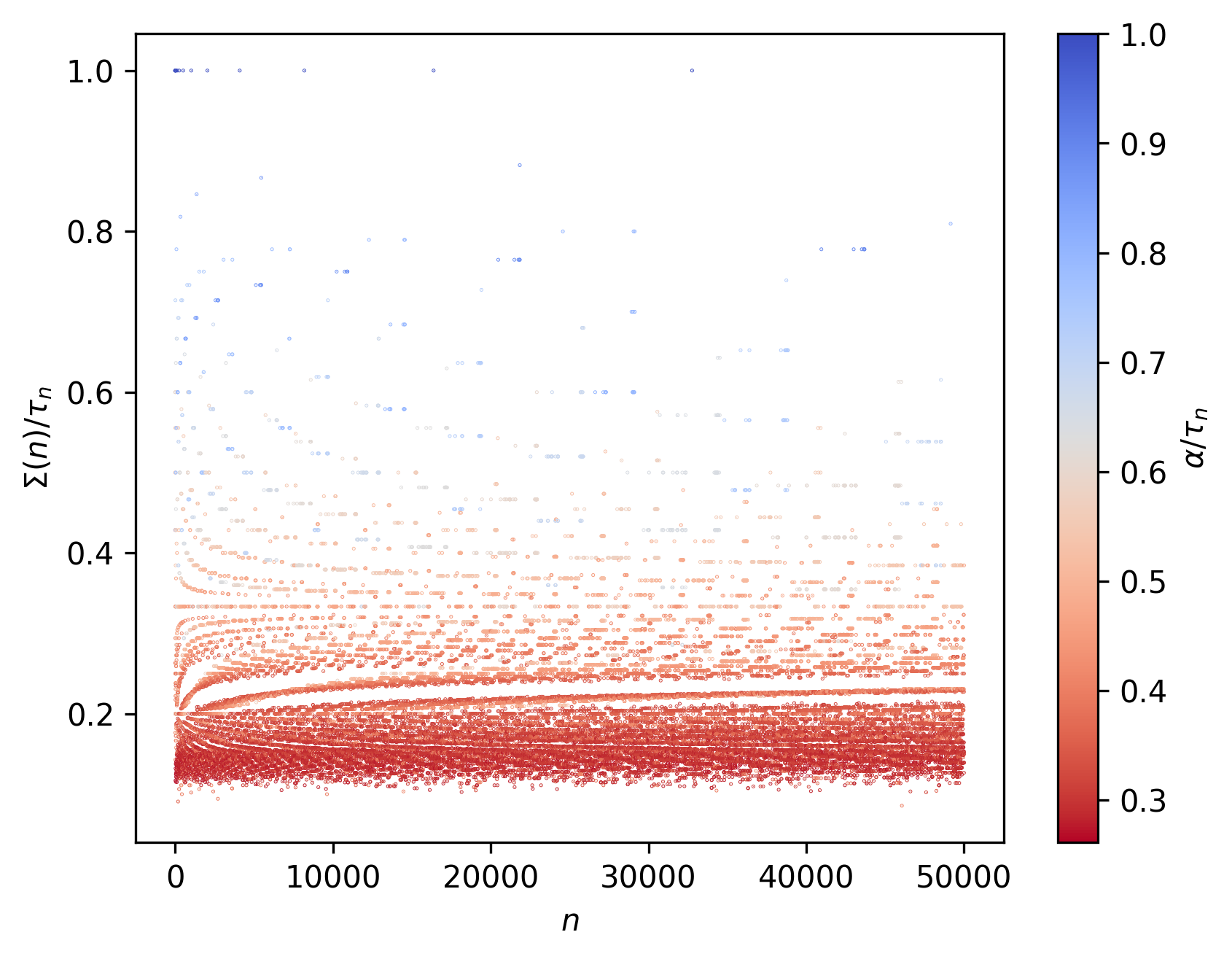
Besides these normalized scores ($\Sigma(n)/\tau_{n}$), we might also want to see at which $n$ is the scoring function first $\Sigma$ maximized ($\Sigma(n)^{max}$) and at which corresponding iteration ($\tau_{\Sigma(n)^{max}}$) does that happen. Here $n_{max}$ represents the maximum $n$ reached by the corresponding collatz function application:
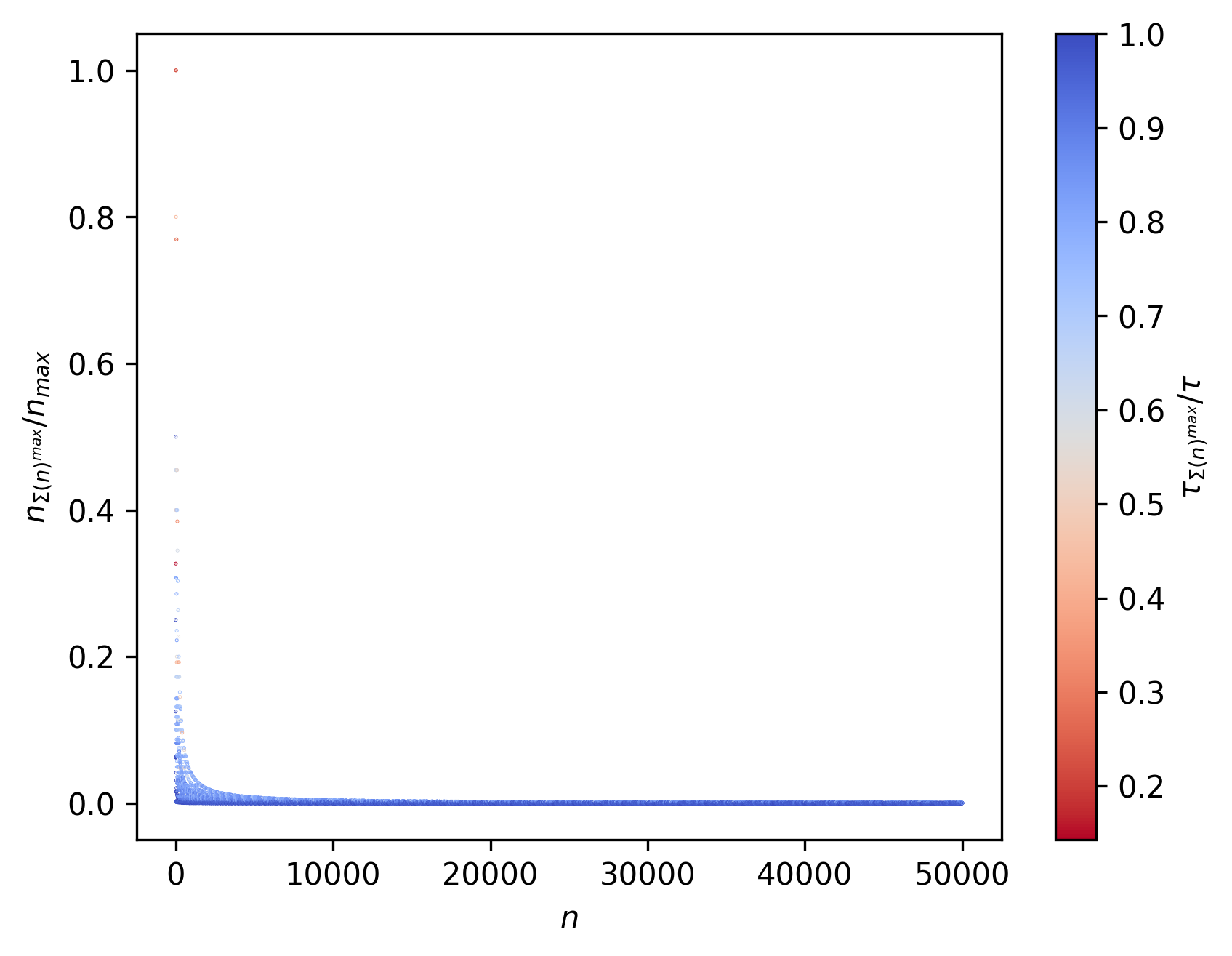
I was interested in seeing this for the 1D case, as the 2D’s case was rather interesting (albeit the color bar isn’t representing the same thing):

And back to the 1D case, here $\tau_{α}$ represents the step at which $α$ is first reached:
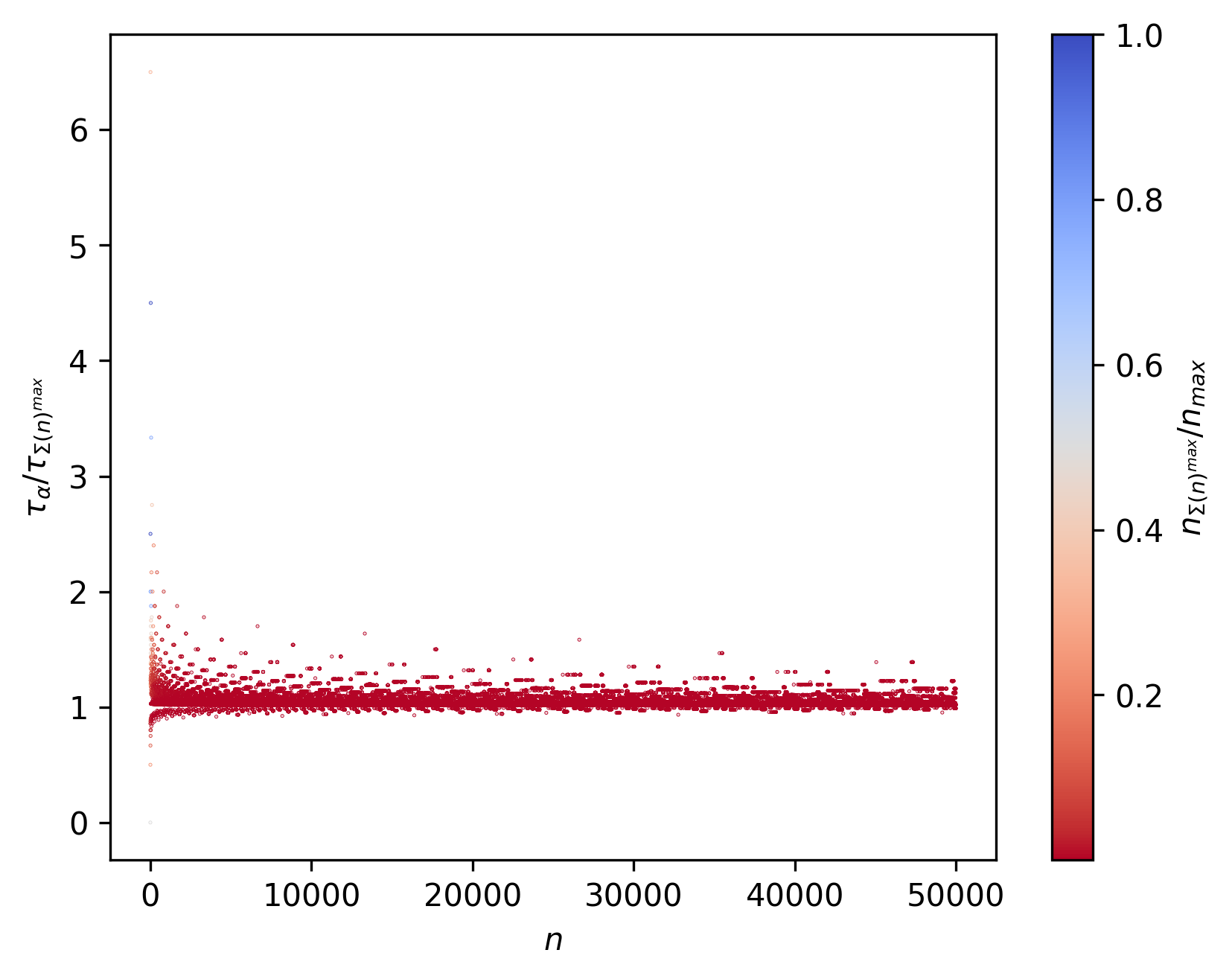
But this setup seems a bit boring… What if the tape itself, and the symbols marked on it, could affect the collatz dynamics?
Collatz’s Tape Machine
Let’s consider a slightly different setup. Everything stays the same, but if the tape reading head happens to shift into a tape cell which is marked (on state - 1), then $n$ is incremented by $1$.
Remember $n = 27$? This is it now:

Or at least the first 200 steps, as it doesn’t seem to halt. And its tape development over each step ($\downarrow$):
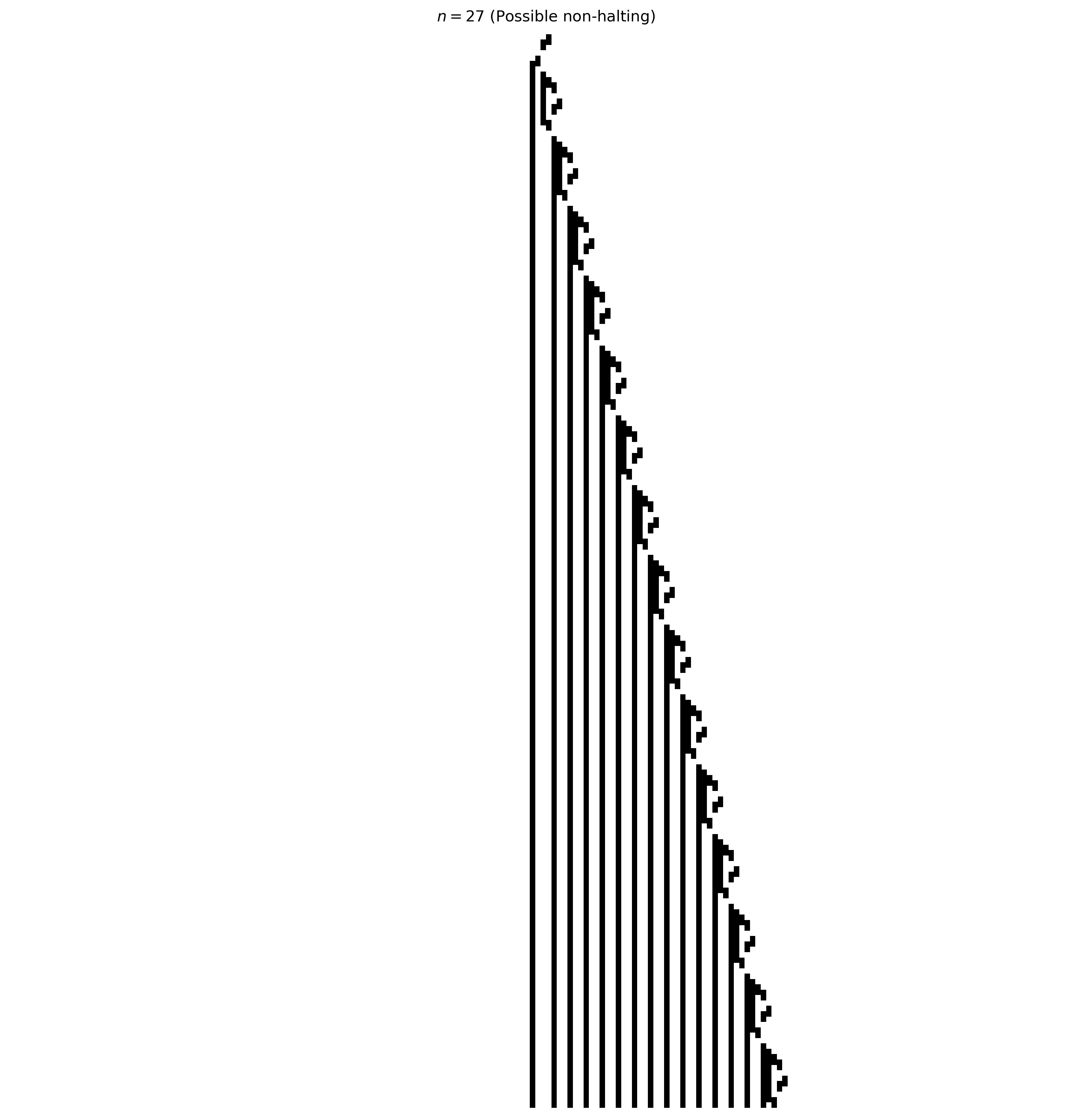
For some cases it’s very easy to verify (non)halting behaviour. Consider another non-halting case $n = 5$:

and more importantly its tape development:
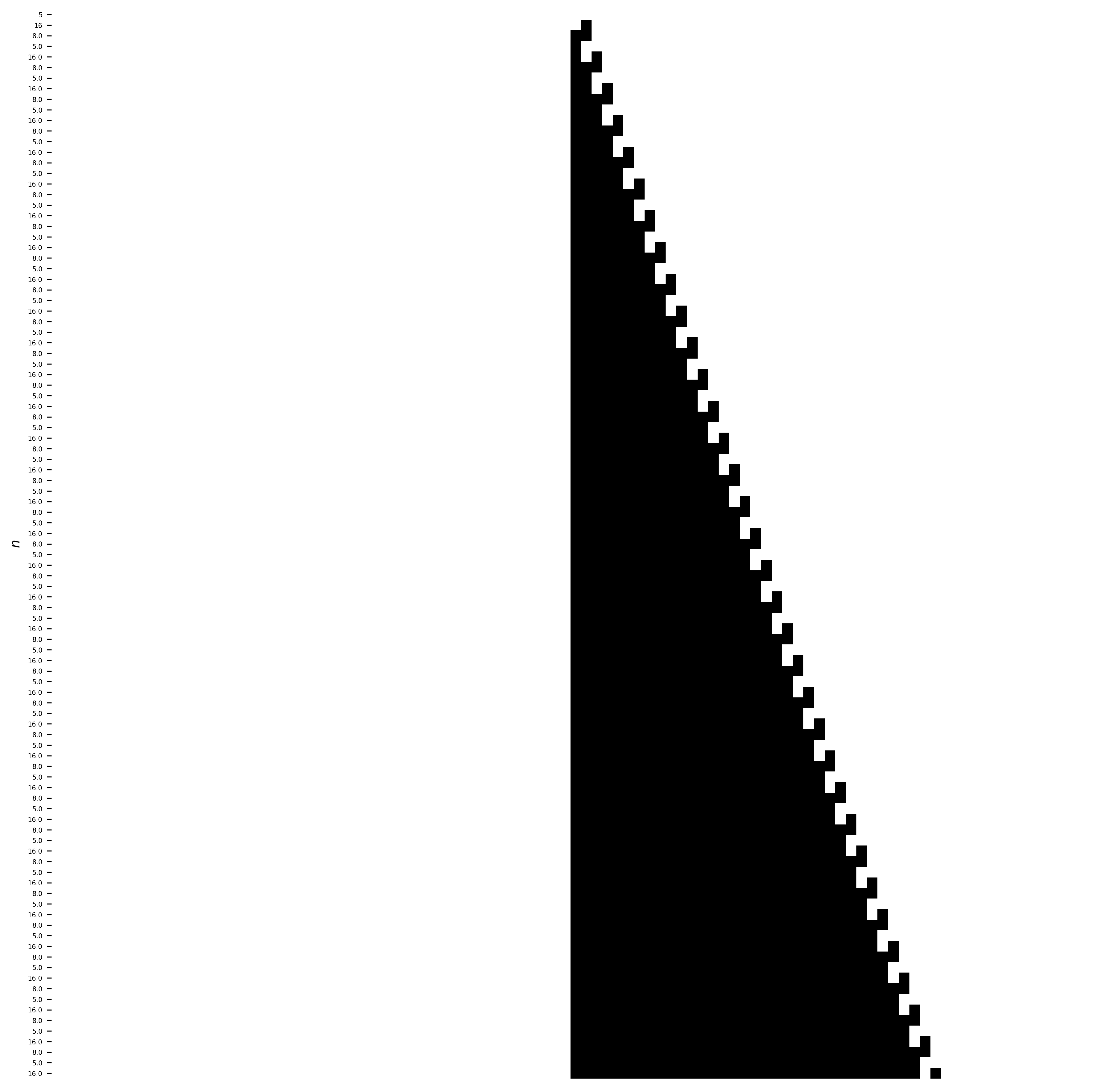
We see that there’s cycling behaviour regarding the $n$s, but also that each $n$ is always going to be associated and lead to the same interaction of (un)marking on its neighborhood (regarding where the tape reading head currently stands). So equivalence of states, and therefore a way to verify if there’s cycling behaviour, would need to take this into account.
All of the cases which will be shown and addressed were verified for a tape of finite size and for a limited amount of steps (respectively $N = 200$ and $t_{max} = 10^{5}$), but of course these impose severe limitations. A tape too small will lead to interference, and one can’t be assured that a given $n$ will not halt after $t_{max}$. These were selected after seeing that a variation of 2-4 orders of magnitude of $N = 200$ and $t_{max} = 10^{5}$, didn’t change the status of the non-halting cases, but of course we never know if a bigger variation of these might not make a difference. As such, the status for these (non-trivial) cases will be of possible non-halting.
Let’s consider the cases from $n = 2$ to $n = 20$, making a comparison between the initial scheme of Collatz’s Tape (CT) with no dependencies on tape, and that of Collatz’s Tape Machine (CTM), where the non-halting cases will have a figure showing their tape progression:
| $n$ | CT | CTM |
|---|---|---|
| $\tau$, $\Sigma$ | $\tau$, $\Sigma$ | |
| 2 | 1, 1 | 1, 1 |
| 3 | 7, 3 | 15, 7 |
| 4 | 2, 2 | 2, 2 |
| 5 | 5, 3 |  |
| 6 | 8, 4 | 6, 2 |
| 7 | 16, 4 |  |
| 8 | 3, 3 | 3, 3 |
| 9 | 19, 5 | 6, 4 |
| 10 | 6, 2 |  |
| 11 | 14, 2 |  |
| 12 | 9, 5 | 7, 3 |
| 13 | 9, 3 |  |
| 14 | 17, 3 |  |
| 15 | 17, 5 |  |
| 16 | 4, 4 | 4, 4 |
| 17 | 12, 4 |  |
| 18 | 20, 4 |  |
| 19 | 20, 4 | 95, 21 |
| 20 | 7, 3 |  |
with the special halting case of $n = 19$ with $τ = 95$:

And over the range $n = 2$ to $n = 50000$, we have the following change in the ratio between $n$s which halt and total, along with corresponding distribution of $\Sigma(n)/\tau_{n}$ for the cases which do halt:
